Seen below is yet another of four six MPPT, 150-volt 60-amp Charge Controllers by Morningstar Technologies that are in operation in our Springfield Ohio location.
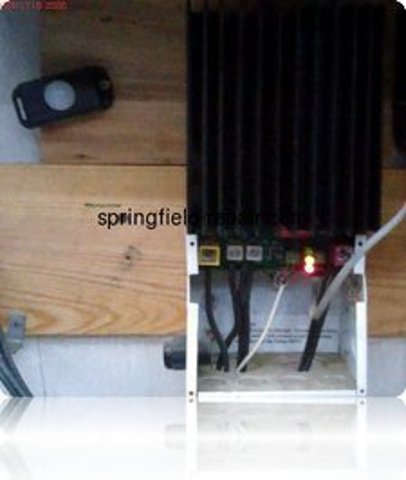
2803 Troy Road, Springfield Ohio
A protection circuit denies current when over the 60amp cap (for this particular controller).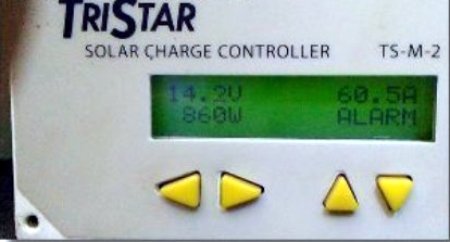 60amps to a 12v battery bank.
60amps to a 12v battery bank.
Seen below is yet another of four six MPPT, 150-volt 60-amp Charge Controllers by Morningstar Technologies that are in operation in our Springfield Ohio location.

The MPPT Charge Controllers have been working flawlessly for about 8 or 9 LOTS of years now. Seen here is a remote data monitor.The controller's faceplate allows for easier monitoring, however the cost is over $100.00 for just the faceplate alone.

As of 2019, much of the lab has been converted (reluctantly) over to a 48v system.
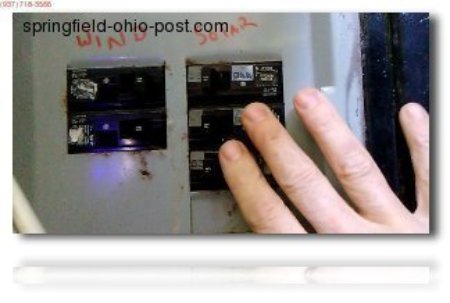 In retrospect, as of April 2023 update: I don't know how the hell I survived without it. 48v system require less maintenance (unless you are using a crappy battery such as the knock-off "duracell's" sold at Batteries Plus and other fine reputable stores).
In retrospect, as of April 2023 update: I don't know how the hell I survived without it. 48v system require less maintenance (unless you are using a crappy battery such as the knock-off "duracell's" sold at Batteries Plus and other fine reputable stores).
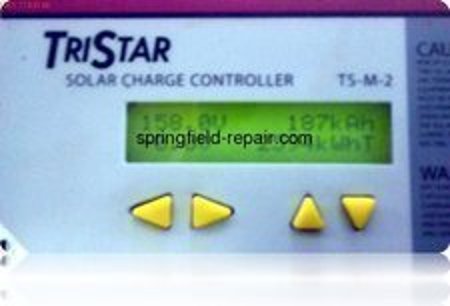
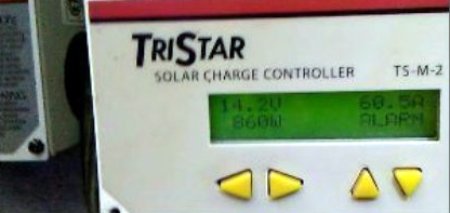
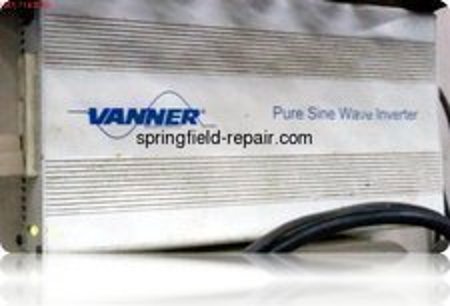
The Vanner Pure Sine Wave Inverter is not the largest here, but has worked flawlessly for about 7 years. This Inverter is totally silent.
Also found in our Springfield Ohio location are controllers for the micro-battery banks.
The controller below is a 15amp model. The battery bank and solar array, as well as the load applied, is a maintenance-free 12v system. Even days without sun, the battery bank rarely will dip down below 12.3 with the load on.
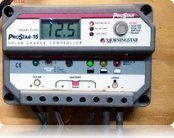
Below are seen the largest inverter in our 12v production operation.
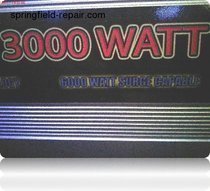
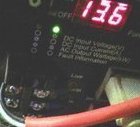
In most applications and appliances the aim has been to obtain devices that do not require an inverter (12v items connected directly to the 12v source without the need of an inverter). Inverters waste energy in a number of ways, for instance to run a 20v item requires that the 12v battery supply be dragged all the way up to 110v then back down to 20v which is loss. More often than not there is a 12v alternative to the non-12v appliances and devices.
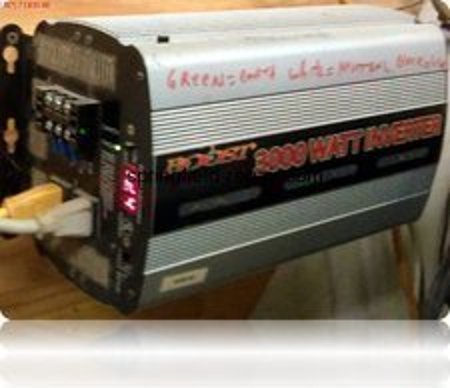
Max available power for this inverter is 6000 watts, and a nominal supply of energy rated at 3000 watts.
The inverter has a fan, but it's not obnoxious, and barely noticed.
Bad Words

Instant Death

Java Heat

One of the benefits of this particular inverter is the ability to run direct AC current to backfeed one of the circuits for domestic use, and allows for the creation of one's own pseudo grid. There is no grid-tie connections made back to the monopoly using an off-grid inverter.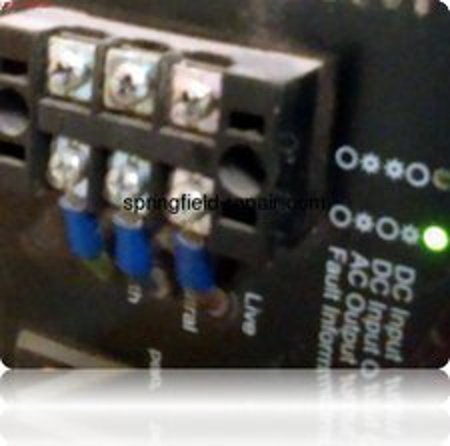
All solar panel arrays, along with the wind generator, come through fused panels such as the one seen below.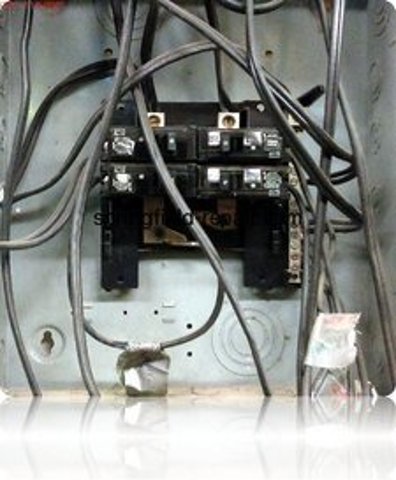
There are also quick-disconnects between all legs of the micro-power plant.
Cabling is seen here as it enters one of the Quick Disconnects; one set is doubled up to allow more amperage through. 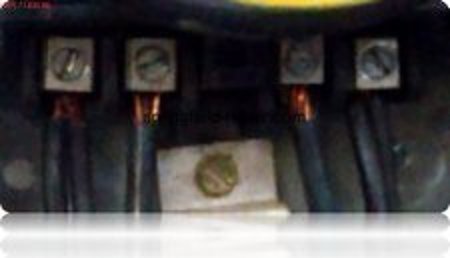
This is the main wall that handles 3 battery banks, including the largest of 5 that are presently within this building.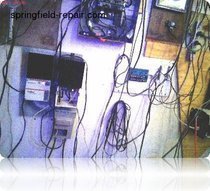
Below is seen an item-specific charge controller which has its own battery bank and solar arrays.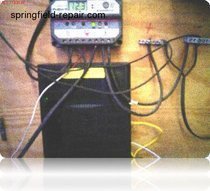 This particular bank of batteries never requires service as the lights it supplies power to are not consuming enough amps to ever draw the battery bank below 12.2v (usually requiring several days without sun).
This particular bank of batteries never requires service as the lights it supplies power to are not consuming enough amps to ever draw the battery bank below 12.2v (usually requiring several days without sun).
The newest micro-system is seen in the photo below. 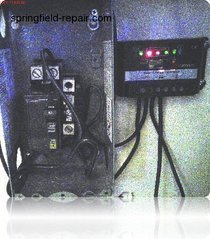 The battery bank that it handles presently is used only by the fans within the firewood stove, and a small water pump.
The battery bank that it handles presently is used only by the fans within the firewood stove, and a small water pump.
This will be the fused board I will use for rudimentary lighting and is not quite installed yet. The fused panel will also handle 8 of the 16 cameras within this building.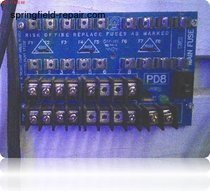
The small item-specific inverter powers the server of which you are presently reading this. The server is a Macbook Pro running Linux.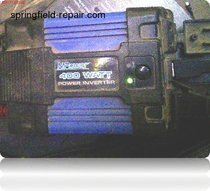
A charge controller by Morningstar producing good amps on a moderately sunny day.
 $30.00
$30.00Today's Date is Saturday, 27-Dec-2025 21:25:16 EST
2014-2025 Kenny Hendrick and the Public Diary. All Rights Reserved.
Posted for educative purposes under THE FAIR USE NOTICE: Some content contained within this website may contain copyrighted (© ) material, the use of which has not always been specifically authorized by the copyright owner. Such material is made available to advance understanding of ecological, economic, scientific, political, human rights, democracy, moral, ethical, and social justice issues, etc. It is understood that this constitutes a 'fair use' of any such copyrighted material as provided for in section 107 of the US Copyright Law. In accordance with Title 17 U.S.C. Section 107, some material contained within this website and it's content is distributed without profit to those who have expressed a prior general interest in receiving similar information for research and educational purposes. For more information see: http://www.law.cornell.edu/uscode
"Copyright Disclaimer Under Section 107 of the Copyright Act 1976, allowance is made for "fair use" for purposes such as teaching, news reporting, criticism, comment, scholarship, and research. Fair use is a use permitted by copyright statute that might otherwise be infringing. Non-profit, educational or personal use tips the balance in favor of fair use." Disclaimer: 17 Notwithstanding the Provisions of Sections 17 U.S.C. @ 106 and 17 U.S.C. @ 106A, the Fair Use of a Copyrighted work for Educational Purposes- Not For Profit- Non-Commercial. (https://creativecommons.org/licenses/by-sa/3.0/legalcode